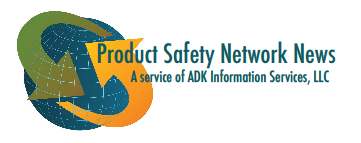Consumer Product Safety Commission Issues Decision on Zen Magnets
November 3, 2017, 4-Traders
The U.S. Consumer Product Safety Commission (CPSC) issued a Final Decision and Order on October 26, 2017, holding that Zen Magnets and Neoballs rare-earth magnet sets (Zen Magnets) are a substantial product hazard. The Commission ordered a stop sale of Zen Magnets and ordered the parties to submit to the Commission within 30 days a proposed corrective action plan that includes a refund and notice to the public. The Commission’s Final Decision and Order sets aside a March 2016 administrative law judge’s ruling that Zen Magnets did not present a substantial product hazard when accompanied by warnings and proper age recommendations and that had ordered only a partial recall of Zen Magnets.
Opinion of Acting Chairman Ann Marie Buerkle Concurring in Part and Dissenting in Part
October 26, 2017, CPSC Court Docket 12-2
Acting Chairman Ann Marie Buerkle issued an opinion concurring with the majority’s decision to recall a portion of the magnets, but dissenting from the majority’s view that a design defect can arise solely as a result of product misuse. She explains in her opinion that “First, I do not agree with the majority that our defect regulation, 16 C.F.R. § 1115.4, recognizes a design defect that arises solely as a result of product misuse. Second, I agree with the ALJ (Administrative Law Judge) that Complaint Counsel failed to prove that the warnings accompanying group 3 magnets were defective.”
Full Disclosure: New Labeling for Cleaning Products
November 1, 2017, Morrison Foerster
On October 15, 2017, California Governor Jerry Brown signed into law the Cleaning Product Right to Know Act of 2017 (the “Act”). The Act requires manufacturers of most cleaning products sold in California to disclose detailed information regarding their chemical content on the product label and on the manufacturers’ websites. While several California laws—such as Proposition 65 and the Green Chemistry Initiative—require some degree of product ingredient transparency, no prior California law has gone this far.
CPSC Final Rule Prohibits Children’s Toys and Child Care Articles that Contain Specified Phthalates, Removes Interim Prohibition on Two Phthalates
October 30, 2017, The National Law Review (Bergeson & Campbell P.C.)
On October 27, 2017, the U.S. Consumer Product Safety Commission (CPSC) issued a final rule prohibiting children’s toys and child care articles that contain specified phthalates. The rule caps off almost a decade of effort since Congress passed the Consumer Product Safety Improvement Act (CPSIA) in 2008, which requires regulatory action on certain phthalates.
CPSC Sets forth its list of recommended best safety practices for manufacturers and importers
Cpsc.gov
In addition to meeting the legal requirements, the CPSC encourages industry-as a manufacturer or importer- to take additional steps to ensure that your product not only meets or exceeds the requirements of federal safety laws, but also is designed and manufactured as safely as possible. Here is a brief outline of some of their recommendations, including links to additional in-depth resources.
Coalition touts ‘scientific evidence,’ scores surprise win
October 31, 2017, E&E News
A new coalition of scientists, doctors and advocates for children’s health notched a big victory last month. Despite opposition from the powerful flame retardant industry and concerns from the U.S. Consumer Product Safety Commission’s staff, the commission moved last month to outlaw many household uses of flame retardants — chemicals linked to reproductive problems, decreased childhood IQs, cancer and other health problems. The win on flame retardants for public health advocates was due in no small part to the coalition, whose goal is “targeting environmental neuro-development risks” and which calls itself Project TENDR.
New national survey reveals concerning attitudes toward toy safety
November 1, 2017, PRNewswire
A new national survey of toy-purchasing parents* conducted online by Harris Poll on behalf of The Toy Association has revealed troublesome findings about parents’ toy safety beliefs and behaviors. In light of these findings, The Toy Association is alerting families of the top safety tips to keep in mind leading up to the holiday season – and all year long.
Online giants address safety compliance with consumers in mind
October 30, 2017, Furniture Today
Addressing compliance across millions of products requires a team effort, particularly when many of those products are coming from around the world.
But having a plan in place that focuses on customer safety helps guide those efforts and makes sure the products are meeting the many global safety requirements.
Opinion: Consumer protection: forgotten priority
November 2, 2017, The Hill
After decades of decline based on new federal safety standards (such as air bags, roof strength, and seat belts) and more public safety awareness, the death rate is again rising. A former congressional staff member claims that efforts by the new administration to undo some of the federal safety standards and policies put in place over the past 40 years is responsible for increased risk and injuries, including death.
Four Packaging Innovations Driven by Consumer Trends
October 31, 2017, emsnow.com
Packaging consultant have highlighted the importance of finding ways to meld trend insights and drivers to support innovation in packaging . Here are four packaging innovations driven by consumer trends: 1. Smart Packaging, 2. Sustainable packaging, 3, eCommerce packaging, and 4. Devicification (device-ification), the opportunity to create a physical packaging platform that interlocks with smart devices.


